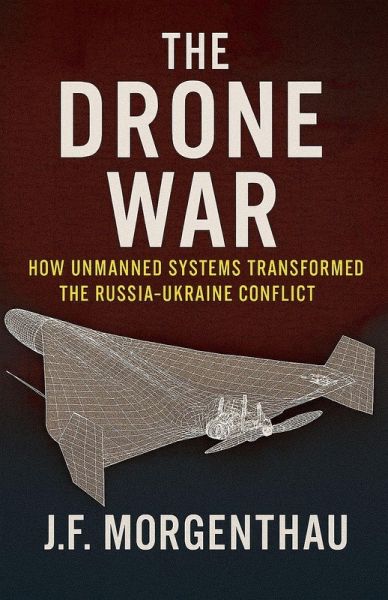
The Drone War
Versandkostenfrei!
Versandfertig in 1-2 Wochen
33,99 €
inkl. MwSt.

PAYBACK Punkte
17 °P sammeln!
THE DRONE WAR: How Unmanned Systems Transformed the Russia-Ukraine Conflict In February 2022, Ukraine had no indigenous drone manufacturing capacity. By October 2025, the nation produces 2.5 million drones annually and has become the world's leading authority on drone warfare. This is the story of that transformation and what it means for the future of conflict worldwide. The Drone War provides the first comprehensive account of how cheap, mass-produced unmanned systems have revolutionized modern warfare. Drawing on three and a half years of high-intensity combat, this book chronicles Ukraine'...
THE DRONE WAR: How Unmanned Systems Transformed the Russia-Ukraine Conflict In February 2022, Ukraine had no indigenous drone manufacturing capacity. By October 2025, the nation produces 2.5 million drones annually and has become the world's leading authority on drone warfare. This is the story of that transformation and what it means for the future of conflict worldwide. The Drone War provides the first comprehensive account of how cheap, mass-produced unmanned systems have revolutionized modern warfare. Drawing on three and a half years of high-intensity combat, this book chronicles Ukraine's journey from desperate improvisation with commercial quadcopters to industrial-scale production rivaling the world's major powers. It documents Russia's sustained Shahed drone campaigns that have subjected Ukrainian cities to nightly terror attacks, the emergence of fiber-optic guided systems immune to jamming, and the October 2025 assault that saw over 400 drones launched in a single night. But this is more than a chronicle of technological evolution. The Drone War explores the human dimension: FPV operators who kill remotely yet bear profound psychological burdens, civilians adapting to life under constant aerial threat, volunteer networks that crowdfunded billions of dollars, and garage workshops that outperformed traditional defense contractors. It examines the ethics of warfare where killing becomes as simple as piloting a video game controller, and where the barriers to lethal force have collapsed to near zero. The strategic implications are profound and global. Ukraine has demonstrated that cheap, numerous systems defeat expensive, sophisticated platforms through mathematics that no amount of technology can overcome. That industrial capacity matters more than tactical excellence. That attrition warfare, the grinding materiel consumption of World War I and II has returned despite decades of assumptions about precision and decisiveness. These lessons are now spreading worldwide as NATO reorganizes its forces, China accelerates drone programs, and non-state actors acquire capabilities once reserved for major powers. Through seven parts spanning 33 chapters, The Drone War examines every dimension of this transformation: the tactical revolution on battlefields, the economic asymmetry favoring attackers over defenders, the manufacturing ecosystems producing millions of drones, the AI and autonomy frontier that will define future capabilities, the global proliferation that makes this technology accessible to terrorists and insurgents, NATO's struggle to adapt Cold War institutions to drone-age realities, and the uncomfortable lessons that challenge fundamental assumptions about modern military power. This is essential reading for military professionals, policymakers, defense analysts, and anyone seeking to understand how warfare has fundamentally changed. The drone age is not approaching, it has arrived, fully formed and accelerating rapidly. Ukraine paid a terrible price to reveal this new reality. The world must now reckon with what Ukraine's experience teaches about conflicts yet to come. The future of warfare is here. It is not what anyone expected. And there is no going back.












